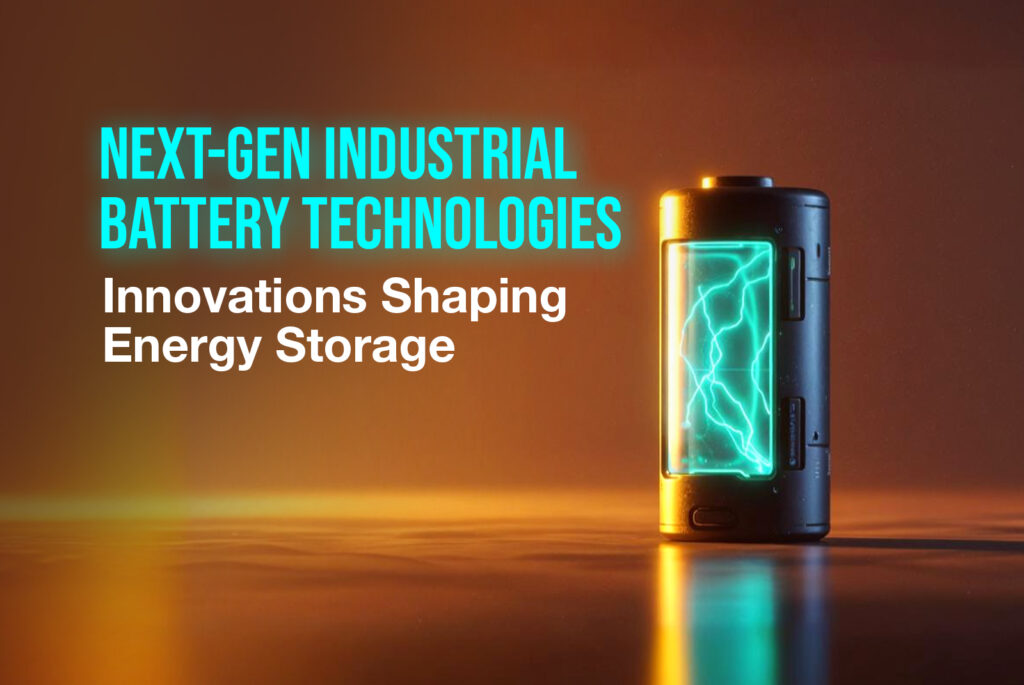As industries transition toward sustainable and uninterrupted power solutions, the demand for advanced industrial battery technologies is rising rapidly. From renewable energy storage to critical backup power for data centers and manufacturing units, next-generation battery innovations are shaping the future of energy resilience and efficiency. With new materials, improved chemistries, and cutting-edge engineering, industrial batteries are becoming more powerful, longer-lasting, and cost-effective than ever before.
Let’s explore the latest breakthroughs in industrial battery technologies and how they are revolutionizing energy storage across industries.
1. Solid-State Batteries: The Future of Energy Storage
One of the most promising advancements in battery technology is the solid-state battery. Unlike traditional lithium-ion batteries that use liquid electrolytes, solid-state batteries replace them with solid materials, leading to several key advantages:
- Higher Energy Density: Solid-state batteries can store up to twice the energy of conventional lithium-ion batteries, making them ideal for industrial applications requiring high-capacity storage.
- Faster Charging & Longer Lifespan: These batteries charge more quickly and degrade less over time, significantly improving their lifespan.
- Enhanced Safety: Without flammable liquid electrolytes, solid-state batteries are less prone to overheating and fires, making them a safer option for industrial environments.
Global companies, including Toyota, Samsung, and QuantumScape, are investing heavily in solid-state battery development. As production scales up, these batteries are expected to redefine energy storage for industrial applications.
2. Lithium-Iron Phosphate (LFP) Batteries: The Workhorse of Industrial Storage
While solid-state batteries are still in the research phase, Lithium-Iron Phosphate (LFP) batteries have already gained widespread adoption in industrial energy storage and backup power solutions. LFP batteries are gaining traction because of their:
- Exceptional Safety & Stability: Unlike traditional lithium-ion batteries, LFP batteries are thermally stable and resistant to overheating, reducing fire hazards.
- Long Cycle Life: These batteries can last over 10,000 charge cycles, making them ideal for industries requiring frequent charging and discharging.
- Cost-Effectiveness: As LFP battery production scales up, costs are becoming more competitive, making them a viable alternative to lead-acid batteries in industrial power systems.
With Tesla, CATL, and BYD leading the charge in LFP battery technology, these batteries are being increasingly used for solar energy storage, electric vehicles, and industrial UPS applications.
3. Sodium-Ion Batteries: A Cost-Effective Alternative to Lithium
The rising costs of lithium and cobalt—critical materials in lithium-ion batteries—have pushed the industry to explore alternative solutions. Sodium-ion batteries are emerging as a low-cost, sustainable alternative with key benefits:
- Abundant & Low-Cost Materials: Sodium is 1,000 times more abundant than lithium, reducing dependency on rare materials.
- Improved Performance in Cold Conditions: Unlike lithium-ion batteries, sodium-ion batteries perform efficiently at lower temperatures, making them ideal for harsh industrial environments.
- Scalability for Large-Scale Energy Storage: These batteries are well-suited for grid-level storage and industrial applications, particularly for storing solar and wind power.
With companies like CATL, Faradion, and Reliance Industries investing in sodium-ion technology, these batteries could soon disrupt the energy storage market.
4. Flow Batteries: Revolutionizing Grid & Industrial Energy Storage
Unlike conventional batteries, flow batteries store energy in liquid electrolytes, making them ideal for large-scale, long-duration energy storage. Some key advantages include:
- Unlimited Lifespan: Flow batteries don’t degrade over time, making them ideal for industrial and grid-level storage.
- Scalability & Flexibility: They can be easily scaled up or down by adjusting electrolyte volume.
- Sustainable & Eco-Friendly: Most flow batteries use non-toxic, recyclable materials, reducing environmental impact.
Vanadium redox flow batteries (VRFBs) are currently leading the market, with companies like ESS Inc. and Sumitomo Electric deploying large-scale flow battery systems worldwide.
The Future of Industrial Battery Technology
As industries move toward renewable energy, smart grids, and electrification, next-gen industrial batteries will play a critical role in ensuring reliable power storage and backup. With solid-state, LFP, sodium-ion, and flow batteries making significant progress, the future of industrial energy storage is becoming more efficient, sustainable, and cost-effective than ever before.

